Apply now to join our next cohort of Community Science Fellows and Community Leads!
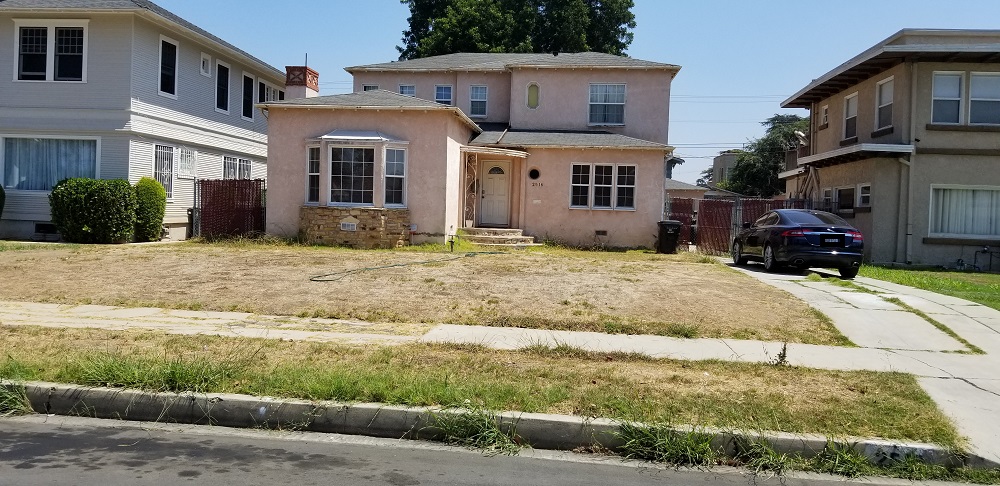
Typical South Central Home and Yard (Image courtesy of Grey4Green)
South Central Los Angeles is a region of Southern Los Angeles County, California, encompassing 28 distinctive bedroom neighborhoods stretching from Watts and Compton to Crenshaw and Inglewood. The area has numerous owner-occupied single-family homes with yards and is home to many blue-collar workers of multiple races and ethnicities. Historically, the area has been known for redlining and its national role in both civil rights movements. South Central is indicative of other injustices regarding quality of life and environmental issues within disadvantaged urban bedroom communities nationally and globally.
Several communities within South Central LA, such as Watts, Compton, and Glenwood, lie along the Alameda Corridor, a railway that connects over 65 miles of track from downtown LA to Long Beach. The area is also crisscrossed by multiple 10 lane freeways, the 105 East to West, and 710 & 110 North to South. Emissions from such environments contribute to cities in California, having among the worst levels of air pollution in the United States and some of the fastest warming counties. According to the Environmental Protection Agency, in 2021, ten of California’s cities made the top 20 list for highest levels of particulate matter (PM) 2.5 Wtd AM (µg/m3) in the United States. Similarly, according to the National Oceanic Atmospheric Administration, the summer of 2021 was the state’s hottest on record.
High levels of PM and increased urban heat (compounded by climate change) have well documented consequences for livelihoods, the natural environment, and resilience of built infrastructure. Adverse effects extend to public health; air pollution and urban heat are known for the increase in air borne diseases (asthma & bronchitis), heat stroke and heart disease, and most recently, vulnerability to COVID-19.
One of the most challenging tasks for disadvantaged community stakeholders and policy makers is to develop mitigation impact solutions that scale. Several community projects over the decades have made little progress in addressing air pollution, urban heat island effect, or food insecurity. The investment models for improving urban centers are broken and show signs of difficulty to scale under increasing climate change conditions, or even worse, under a national pandemic crisis.
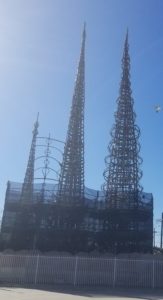
Watts Towers
Grey4Green is working with a research scientist, Firehouse Community Farm, and local stakeholders within South Central LA, to measure the thermal heat reduction and capture of PM 2.5 / 10 by passion fruit vines and additional regenerative plant foliage. The ideal mixture of plants includes multi-purpose specimens, shade trees for reduced urban heat island effect, and fruit trees and vines to improve food nutrition.
This community science project seeks to economically quantify the multiple environmental benefits of a repeatable community plant palate. A multi-purpose community plant palate can energize and compound multiple stakeholders’ investments into a repeatable community investment model, by reducing the cost to each stakeholder’s investment and amplifying the results for each dollar invested. The project breaks down the individual social justice silo investments and rebuilds the social justice investment into a crowdfunding project with multiple desirable and measurable outputs. Benefits of the project have further implications for improved public health, city infrastructure, and individual and community wellbeing.
A major objective of Grey4Green and partners is to engage the local community in developing low cost mitigation solutions for PM 2.5/10 and urban heat island effect. As an output, Grey4Green and partners aim to publish designs that encourage self-mitigation strategies and action, leading to a larger cumulative impact across a wider geographic range than individual funded government projects.
This project is a continuation from a 2019 Watt’s micro-climate project, that demonstrated that economically disadvantaged communities want to participate in mitigating climate change and just require the knowledge and toolset to do so.
Timeline
The project began in February 2021. The following milestones will be achieved over the duration of work with Thriving Earth Exchange:
Creating clean air using passionfruit vines: AGU’s Thriving Earth Exchange helps the Watts neighborhood of Los Angeles understand the link between air quality and water management
One weekend a long time ago, Joseph Gallegos dug up his Los Angeles yard to try and put wastewater to work. At the time, the city was experiencing a severe drought and water restrictions ensured that whatever had been green before was now brown, and whatever was brown would kick up as dust and debris with the slightest breeze in the air or shuffle of the feet.
“It started because I was tired of my lawn looking brown,” said Gallegos, “so I asked the question, ‘How do I get my laundry water to my lawn?’ There wasn’t anything on the market and yet all the literature said you can do it.”
Read the full story here.

Joseph Gallegos is leading the charge to develop new economic models that drive urban eco island developments. Mr. Gallegos is a serial entrepreneur – problems are just opportunities for new solutions. At Grey4Green there are two sides of the company. The commercial side focuses on teaching Do It Yourself (DIY) homeowners on how to grow lush landscapes with greywater. Then there is the Public Good side of the company, where we focus on empower disadvantage communities to become self-sufficient in solving multiple community issues with plants. These could include increase nutrition food gardens, food security with nuts and fruit trees, RX Agriculture to solve diabetic conditions, and using trees to mitigate urban heat island, air pollution, and particulate matter 2.5 pollution. We empower homeowners by showing them how to start trees and vegetable crops by seed, what trees provided food and shade, and what trees can provided extra income by selling the fruits or nuts.
Project Manager Julia Kohn has served in the product development and marketing arena for 25 years, working as a creative liaison for a wide range of businesses, non-profits, and individuals. Julia currently works for a water conservation innovator, while supporting the Particulate Matter Project with Grey4Green. In her spare time, Julia practices yoga and meditation, writes music, and leads a local girls singing group.

Dr. Samira Muhammad is a research scientist whose work focuses on the reduction of atmospheric particulate matter (PM) using urban plants. Samira’s recent journal publications mainly focus on the importance of leaf traits in accumulation and immobilization of atmospheric PM. As community scientist and partner to Grey4Green, she collaborates in research conceptualization and methodology, and leads data analyses and report writing. Dr. Muhammad has used a wide array of analytical methods for estimating PM on leaves of urban plants including gravimetric analyses, magnetic analyses and scanning electron microscopy. Additionally, Dr. Muhammad has expertise in analyzing leaf traits such as trichome density, leaf wettability and stomatal density using either knowledge-based procedures or image analysis. In her free time Samira loves to bake, eat and spend time with family and friends.
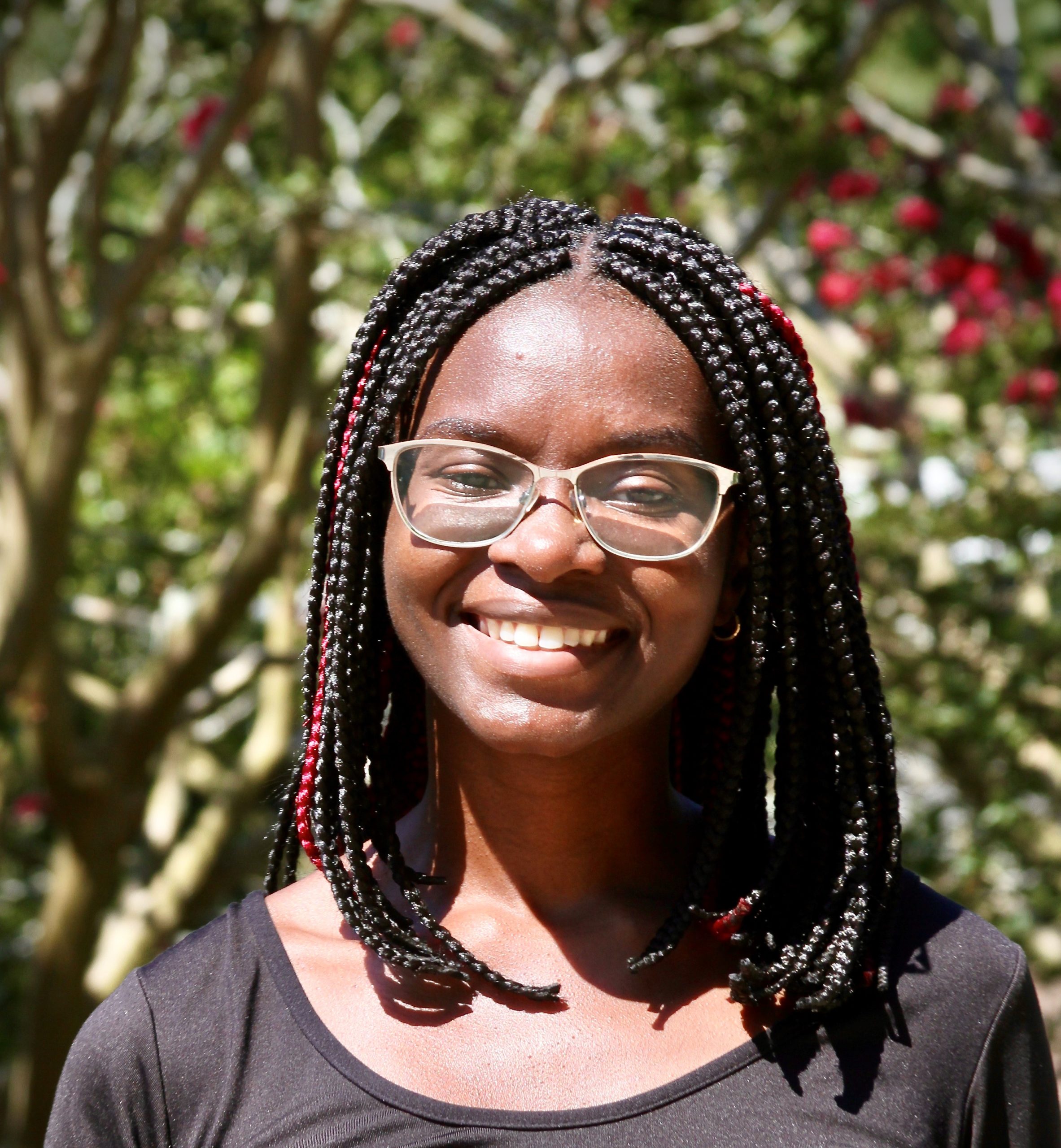
Sehdia Mansaray is a Master’s in Development Practice student at the University of Arizona. Her interests, grounded in understanding human-environment linkages, identity, and power to address food security, conservation, and community resilience, have directed her towards field work in environmental anthropology, geography, and agroforestry in Guatemala, Reunion Island, and Senegal. She is currently an Outreach Associate at the USA-National Phenology Network where she is partnered with the Arizona Association for Environmental Education and Arizona Master Naturalist Association to create more inclusive and equitable natural history programming in Tucson, AZ. She has a B.S. in Environmental Science, B.A. in Anthropology, and French minor from North Carolina State University. In her free time she gardens, plays guitar, dances, hangs out with family and friends, and binges mystery shows.
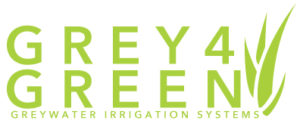
This project is supported by funding from the Gordon and Betty Moore Foundation.
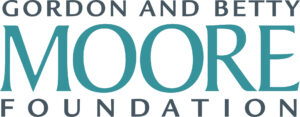
(c) 2025 Thriving Earth Exchange